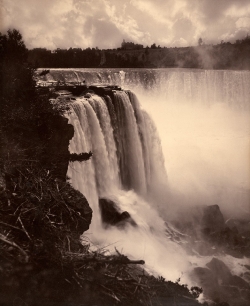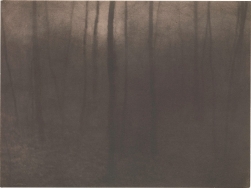Photography that focused on the natural wonders of di erent regions continued to ourish in the late nineteenth century. Pictures of Niagara Falls, the Adirondacks, and the Wisconsin Dells played a significant role in encouraging tourism and commercial development of these areas. Yet photographs were also used as tools in the fledgling environmental preservation movement to both celebrate the beauty of nature and bear witness to its degradation.
Tourism, Preservation, and Artistry: 1870s-1890s

With the introduction of new techniques and equipment, practicing photography in the field became easier and an increasing number of amateurs took it up as a pastime. Professionals and ambitious amateurs explored ways to distinguish their work, such as making larger prints or emphasizing pictorial effects over clarity of detail.While many worked at the intersection of art and commerce, Alfred Stieglitz, along with his protégé Edward Steichen, championed aesthetic concerns. They placed a higher value on artistic qualities, as determined by the eye of the photographer, than on recording what was before the camera, thus opening the door for new approaches to landscape photography in the twentieth century.
Above: George Barker, American, born Canada, 1844–1894, Niagara Falls, 1886, albumen print, The Nelson-Atkins Museum of Art, Kansas City, MO, Gift of Hallmark Cards, Inc., 2005.27.3503
Below: Edward Steichen, American, born Luxembourg, 1879–1973, Woods Twilight, 1898, platinum print, Lent by The Metropolitan Museum of Art, Alfred Stieglitz Collection, 1933 (33.43.14)
